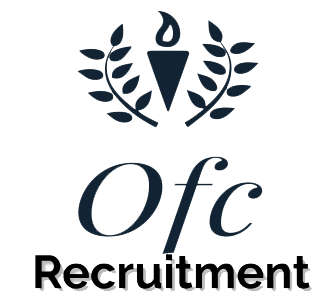The past decade has seen an increasing number of employers recognising the business benefits of improving the level of diversity and inclusion within their workforces.
Having recruited on behalf of the Legal sector for over ten years, I have personally witnessed this shift across the wider Professional Services landscape. However, although we’ve certainly come a long way from traditional recruitment practices and workplace management models, there’s still more that needs to be done in terms of improving the level of diversity and inclusion across all sectors and industries.
The changing workforce and why we need diversity and inclusion in recruitment
The UK’s working population is changing, and we now have four different generations of talent with diverse approaches to job-seeking and employment. This shift means employers are no longer in a position to pick and choose the best talent, but rather the best talent is spoilt for choice when it comes to finding an employer which best fits their personal values, working styles and lifestyle needs.
As recruitment specialists, we have kept our ears to the ground of changing candidate behaviours which have continued to reshape and redefine recruitment practices throughout the globe.
Research by KPMG shows that permanent placements have hit a 17 month low. Research by Standout CV found that with 79% of job seekers have used social media for job information, Recruiting Daily say that almost 70% of job applications made in 2021 were made from mobile devices.
Diverse application methods and channels will lead to a diversity of candidates applying for roles. And there’s no disputing that companies which promote inclusion of diverse people and ideas are the most successful in today’s business landscape. But with the UK’s workforce comprising a diverse melting pot of personalities, generations, cultures and backgrounds, it’s important to execute an inclusive recruitment strategy which speaks to a diverse range of talent.
Absence of diversity and inclusion in recruitment limits access to the best talent
Taking steps to attract diverse candidates to your company is a key factor in developing a diverse workforce. In spite of this, many employers still allow traditional recruitment processes and their inherent biases to influence their hiring decisions.
The unfortunate result of these influencing factors manifests in how far too many employers overlook great candidates with untraditional backgrounds and innovative ideas to bring to the table.
Research by CSI found that applicants from a majority background received a call back 24% of the time; yet applicants from a minority background had to send 60% more applications in order to receive the same number of call backs.
Unconscious bias can also have an underlying effect on hiring decisions following the interview process. Lauren Rivera from the Northwestern Kellogg School of Management so aptly summed up the issue, saying: “In the absence of concrete answers to interview questions and reliable predictors of future performance, assessors purposefully use their own experiences as models of merit.”
Embracing diversity and inclusion to attract and retain the best talent
There are many steps employers can take to promote inclusion and attract diverse talent, and many companies are currently leading the way in this regard. Among these is the BBC, which has pledged to increase the number of ethnic minority staff conducting interviews and has banned ‘all white’ shortlists for middle and senior ranking roles.
Another company which has recently enhanced its employee value proposition is Diageo. Until now, one of the best perks of working for the world’s biggest spirits company was a product allowance. However, Diageo’s 4,500 employees across the UK will now be raising a glass to a new policy, open to men and women, granting them 52 weeks of parental leave – with the first 26 on full pay.
Three ways to promote diversity and inclusion in the recruitment process
1. Write inclusive job adverts which speak to a diverse range of candidates
This includes writing job adverts in such a way that the language doesn’t discourage certain candidates from applying, and ensuring employees are aware that the business is embracing diversity and inclusion as part of their recruitment strategy. Try to not have too many requirements on experience or the person as they can detrimentally effect application levels from suitable candidates.
2. Accept blind CVs from recruiters
Accepting blind CVs from recruiters is also a significant stride towards increasing diversity and inclusion in your workplace. This approach allows hiring managers to evaluate individuals based on merit alone. This technique is becoming more and more common, with the tech world in particular embracing it with a number of Apps or products now offering this service for matching job seekers to employers.
3. Appoint hiring decision-makers who represent diversity and inclusion
Employers can also benefit from appointing a diverse interview panel or a diversity champion for recruitment. Designing an evaluation that is predictive of performance will also help hiring managers choose talent based on their level of competency for the role.
We can help you execute a diverse and inclusive recruitment strategy
These approaches allow employers to develop a workforce with a broad range of backgrounds, increasing the likelihood of bringing in new ideas and creating a highly inclusive, diverse and productive workforce.
What are you doing to promote diversity and inclusion in your workplaces? If you’d like to continue this conversation you can contact me on: alex.oni-edigin@osafirstcare.co.uk.

